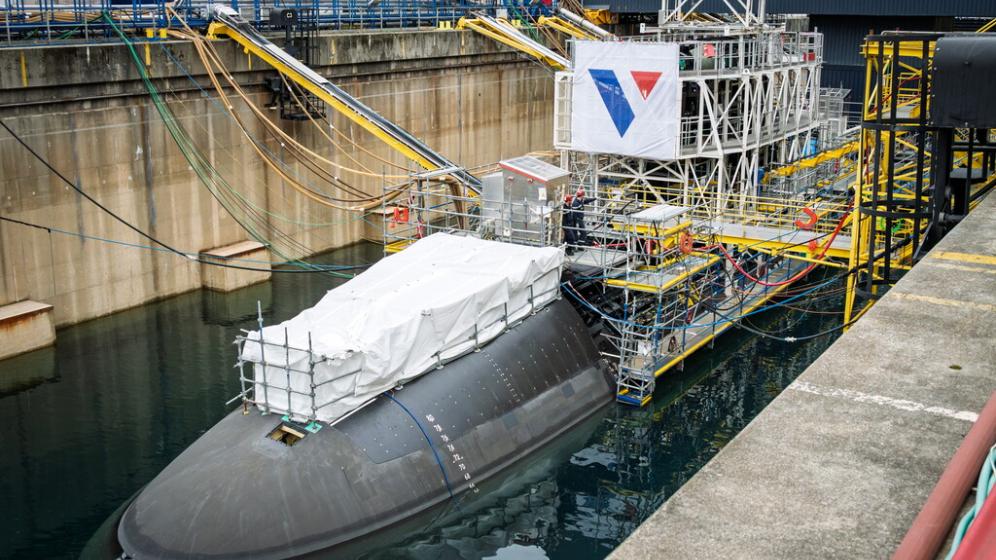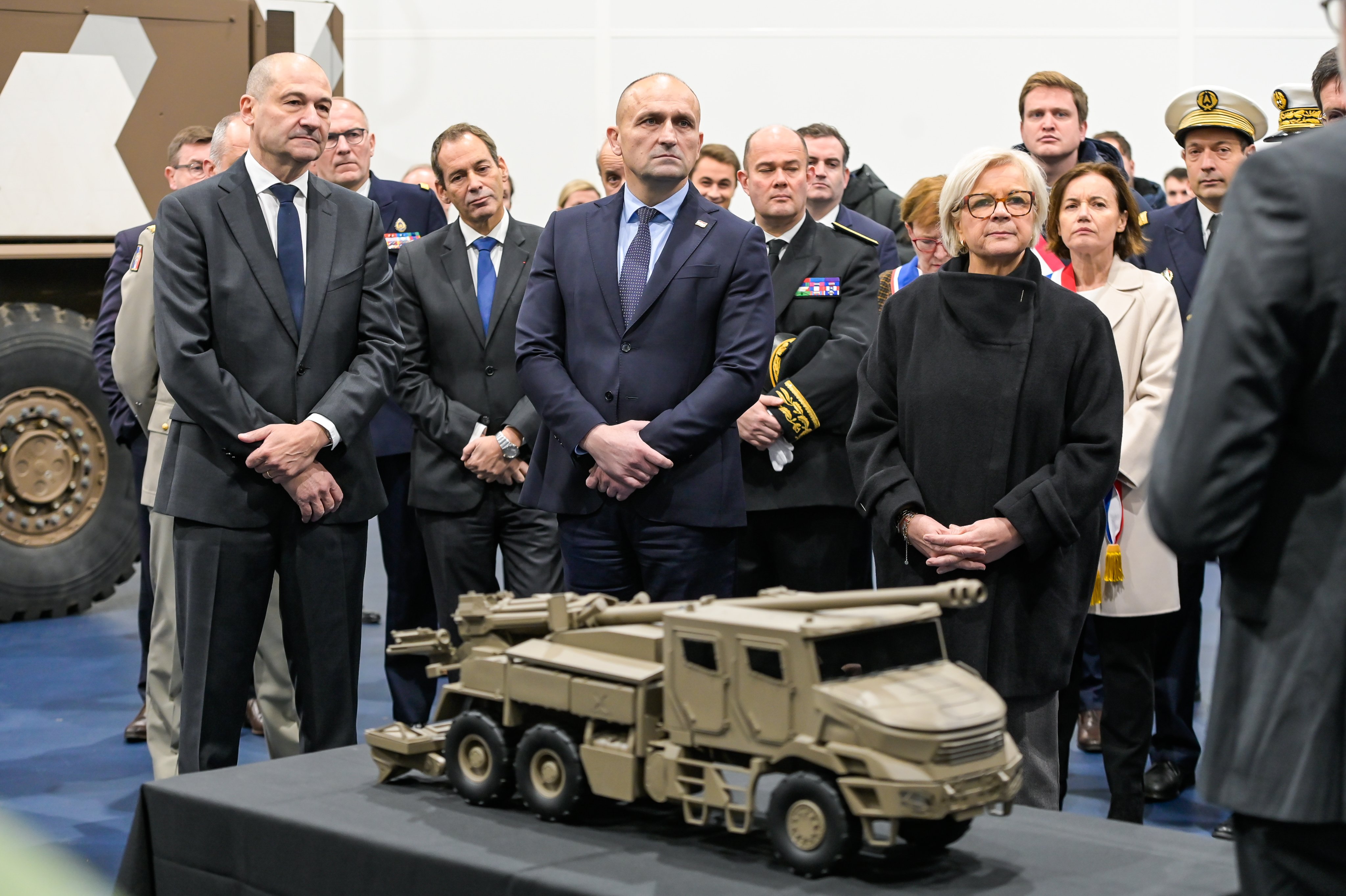The growth in air traffic and the multiplication of air threats are forcing a new look at management of the sky. Security is ensured by national air forces but common control of European airspace is likely to become a major challenge for finance and sovereignty.
Air Security of the Homeland in 2030
The growth of air traffic in Europe has direct implications on overflights of our territory, making adaptation of our current structures for controlling airspace more urgent. The common objective of the Single European Sky (SES) is the defragmentation of national airspaces and optimisation of air pathways, both civil and military. Future management of the Permanent security posture (Posture permanente de sécurité—PPS), which is the responsibility of the Air Force, will inevitably be affected by it and will have to take into account the growing threats from drones and terrorism. To respond to these issues, a new ‘policy for the sky’ needs to be established, which includes space aspects as well as those arising from the new arrangements for air traffic management to be effective by 2025.
The Permanent security posture—a developing mission for the Air Force
The Permanent security posture is a mission for military aviation and is essential for the air security of our territory. It is a truly permanent function, and a demanding one too, operating 24 hours a day, 7 days a week, wholly operationally and financially undertaken by the Air Force in collaboration with the Directorate general of civil aviation (Direction générale de l’aviation civile—DGAC). It is extremely reactive, able to respond to the requirement of rapid decision-making and to obtain in a very short time the political authorisation to act, including from the level of the Prime Minister.
The PPS is a high-performance structure that has no real equivalent in any other European country. Its field of action embraces a wide range of situations—accidental, intentional or otherwise:
– non-respect of filed flight plans and of limited flying areas,
– surveillance of overflights by apparently suspect aircraft,
– assistance to aircraft in difficulty,
– prevention of intrusions into national airspace by foreign aircraft attempting to gather intelligence, intimidate or spark off politico-military escalation,
– airborne surveillance and protection of events of high political or media value,
– surveillance of the Kourou rocket launch area when space launches are in progress.
The number of alerts and interventions has increased recently, with over 400 in 2018 divided roughly half and half between loss of communication and overflights of prohibited zones. Russian aircraft activity on the boundaries of our national airspace has also increased. Air surveillance of territory will inevitably see considerable change from now to 2030, going from identification and detection of aircraft by national civil and military assets to wholly computer management of flight paths of connected objects, which will be to a large degree centralised in the new Single European Sky system. Additionally, interaction between air security and anti-terrorist action in its various forms needs to be strengthened. It needs also to be able to counter the problem posed by the development of drones.
An overall approach to territorial air security,
justified by the terrorist threat and the proliferation of drones
Terrorism
The interaction between the territorial air security organisation and the fight against different forms of terrorism, which includes security of airports and air bases and the future proliferation of drones, has recently been strengthened. Because of the SES, it needs to take into account a new division of roles for the identification and management of aircraft.
The link between terrorism and the opportunity of attack on air facilities, which are by their nature easily damaged, is now well recognised even if, for example, lessons from the affair of Air France flight 0963 from Algiers, hijacked on 24 December 1994 by members of an armed Islamic group and stopped in Marseille while the group prepared to crash it onto Paris, were not at the time recognised for what they were, though they presaged the attacks of 11 September 2001.
The risks of intrusions onto airports and air bases, and the vulnerability to Manpads(2) of aircraft landing or taking off, were long ago identified, and measures since taken notably in the field of intelligence, the surveillance of people in airports and the security of public accesses. They presuppose considerable inter-ministerial preparation and closely coordinated action. They are in part financed by the airlines, which pass the cost on to their passengers.
Drones
The issue of the growth in intrusions of drones into restricted spaces and a spectacular increase in the number of incidents in the air pose increasing security problems. The Air Force is not currently officially in charge of preventing accidents with drones—it is the responsibility of the DGAC and operators of sensitive sites—yet in terms of various conventions it will inevitably become involved in cases of accident.
The European Aviation Safety Agency (EASA) is forecasting a tripling of incidents involving drones compared with the period 2011-2015. A similar evolution is anticipated in the North American continent. In France, we have already seen the near collision of a drone and an Airbus A320 on its approach to Charles-de-Gaulle airport on 19 February 2016 and an intrusion into the nuclear power station at Bugey on 3 July 2018. More recently, in the United Kingdom, Gatwick airport was temporarily closed on 19 December 2018, stranding 110,000 passengers.
Moreover the number of drone operators has rapidly increased. From about 50 in France in 2012, we had more than 5,000 operators using 10,000 drones in 2018. Looking at ‘leisure’ drones alone, over half a million have been sold in France since 2016. Controlling this market is difficult, with ways and means that are insufficiently harmonised between European countries despite the efforts of the European Commission and the European Defence Agency (EDA, which has also created a working group on autonomous drones) to come up with common rules. Step by step, France has been putting national legislation into effect.(3) The maximum altitude permitted in European Union countries is 150 metres/500 feet and a number of obligations are planned, though discussions continue, to cover registration of the drone device, identification of the user and his pilot training, the means of maintaining contact with the device and a ban on night flying.
The individual freedom of the operator should not be excessively constrained by over-heavy legislation, which would risk putting the brakes on development of the technology to the advantage of other countries which are also drone manufacturers—China, for example. It is nevertheless essential to manage this new popularity of use of airspace. Developments now envisaged by drone operators, such as urban taxis, parcel delivery and inspection of depots, make it hard to anticipate the problems that will be posed regarding sharing of airspace: we can be pretty sure, though, that they will be quite different from those we now know.
The Directorate general for armament (Direction générale de l’armement—DGA), is, like its foreign equivalents, exploring different approaches to achieve early detection and destruction of drones, including anti-drone rifles, lasers, trained birds of prey, jamming navigation systems, capture nets and cyber intrusion. Up to now no system has proved entirely successful even though several countries, France included, have ordered materiel from private firms and continue evaluation of its effectiveness. Progress in Artificial Intelligence (AI) will lead to greater reactivity in the automatic piloting of drones, which will nullify to a large extent the current methods of jamming its communications and drive us more towards provision of kinetic means. In parallel, innovative technologies are worth a look particularly since perfection of anti-drone measures interests the Ministry for the armed forces not only for air security if the territory but also for external operations, as has already been seen during coalition operations in Iraq and Syria.
The risks related to terrorism and drones are yet another reason for ensuring the adaptation of the country’s radar cover, especially at low altitude, even if detection of drones remains very difficult. The evolution of threats means consideration has to be given to very fast, stealthy targets and also to small, slow ones. Experiments are currently taking place on equipment for managing drones close (5 km/3 miles) to an airport.
The development of drones and its consequences therefore presents a triple challenge for the Air Force:
• Public opinion would not understand if effective measures were not adopted by the Air Force for the anti-drone battle nor that responsibility for that battle remains essentially in the hands of the managers of critical installations such as nuclear power stations and aerodromes. The current PPS arrangement can only respond in a limited manner to the need: Mirage and Rafale aircraft are too fast over the zone, whilst helicopters with on-board marksmen aiming to intercept slow targets do not always have the speed needed to get to the intercept point in time.
• The place and role of the Air Force itself in an inter-ministerial anti-drone organisation cannot be dissociated from the airspace security management policy. For the moment, effort is focused on low altitudes but in the future some drones will cruise at altitudes approaching those of commercial flights.
• Future management of the PPS should explicitly take into account problems relating to interference from drones, whatever their flying altitude. For the Air Force this would be a formal extension of responsibilities, which supposes political and legal endorsement as well as allocation of the assets required. It would confirm and boost the role of the Air defence and air operations command (Commandement de la défense aérienne et des opérations aériennes—CDAOA). Operational management of the PPS, hence of the active measures then needed would remain unchanged from the current arrangements.
New forms of European airspace management—a major challenge for military aviation
Across the world, the annual growth in air transport is around 5 per cent, and air traffic doubles every 12 to 15 years. It has been recognised that this pattern is incompatible with the way air traffic is controlled in Europe and in the United States. A move towards total digitisation of airspace management within the Single European Sky programme is therefore inevitable, in view of this forecast increase in traffic.
Removal of national airspace boundaries and computerisation of air corridors has been underway in the EU since the beginning of the century as the various stages of the SES have progressed, including the current version, Single European Sky 2+. This movement today seems irreversible, supported as it is by the airlines and the European Commission. The SESAR programme,(4) to which Thales is one of the main contributors, is financed by the Commission and is at the centre of defining new IT systems. Things are now progressing rapidly and involve also the activity of military air forces in Europe and those of EU partners, including, of course, the Air Force.
Detection of aircraft and drones displaying suspect behaviour will be done not only through their flight plans but also by following their movements in real time using information combined from civil and military radars. At the same time this has to avoid impacting the freedom of manoeuvre of military aviation with regard to exercise and training areas, the confidentiality of their activities and the management of flights and deployments without prior notice. Moreover, by virtue of its geographical position at the crossroads of European air lanes, France has a particular responsibility and is a key element in any future arrangement.(5)
Given that, the presentation in Brussels in December 2018 of a common attitude among those responsible for European countries’ military air fleets was an important step: two officers, one French the other German, both deputy commanders of their respective air defence and air operations commands and speaking on behalf of ‘the European military air community’ indicated in particular that:
– Military activity is not responsible for delays and congestion in European skies, because of a number of measures that have already been adopted.
– The ‘the European military air community’ is a party to the SES, even if it only represents a minor proportion of the use of airspace (about 11 per cent), and has its own particular needs, costs and security considerations.
– European ATM (Air Traffic Management) could be an advantage for purely military activities in an increasingly complex environment but brings with it a need for special training of aircrew.
– Civil-military interoperability is already compulsory and military organisations are already a step ahead with regard to digitisation of operations in the SES area.
– Cyber-security is a common concern for military and civil organisations.
– Drone navigation must be integrated into the SES area.
– Any defragmentation of air traffic operating space and possible delegation of tasks to independent bodies must include contractual obligations on priorities for military access.
Moreover NATO, which has drawn up over 300 STANAGs(6) for joint exercises and the activities of member nations, among which is which the US Air Force, the largest military air fleet in Europe in terms of number of flights, has specific interests to be taken into account in the new organisation for ATM in Europe.
Airmen therefore have a positive attitude towards SES whilst making their particular needs known, including flexibility of the structure to ensure movement of aircraft, training and organisation of missions (including the PPS), confidentiality, cyber-security and the financial and technical sustainability of the adaptations required. Clearly, putting new SES systems into place relies on optimisation of flight paths and the regular flows of commercial traffic, with military activities way behind them, given the current order of priorities—and, incidentally, such military activities that are unprogrammed and unannounced principally because they are arranged in response to an emergency, and for which confidentiality is a major consideration, affect only a very minor proportion of the European air traffic that has to be managed.
Specialists in SESAR and at the European Defence Agency (EDA) estimate that the technologies developed for ATM will be able to respond simultaneously to civil and military needs. New infrastructure will ensure the interface between satellites, instruments in flight and ground stations and should allow optimisation of areas requested by the military bodies for their specific needs. For major events, a part of air-space will always be able to be mobilised to deal with a real or simulated crisis situation.
The PPS will have access to more information: today, the flight path is known from the flight plan filed before departure, whilst SESAR will afford exchange of data on the flight path in real time, directly from the instruments on board the aircraft concerned. It will be accessible by both civil and military competent authorities. The system is not aiming to achieve total autonomy in an aircraft’s flight management but, as it enters service step by step, a gradual increase in the automated assistance to pilots and air traffic controllers. The operator remains in the loop constantly and can intervene directly on the flight path if need be, even if that becomes more and more the exception.
The consequences on the employment and training of both civil and military air traffic controllers should not be over-dramatised: the development of the system will occur progressively over a minimum of 10-15 years. In principle there is no negative impact on employment, though the profession will evolve towards system management, rather like that of pilots on modern aircraft. The Air Force personnel management plan will nevertheless need to take these developments into account.
Setting up a SES is inseparable from a common approach to space management and surveillance
New civil and military ATM systems, in Europe and in the United States and progressively in the rest of the world, will depend heavily on communications that use space relays. There is a close link between setting up of the SES and the capability of European countries to manage the security of their space networks and therefore to possess in particular the space surveillance assets of the system. There is the obvious question of vulnerability of guaranteed communications with satellite platforms (cyber attacks, physical strikes, solar storms or satellite breakdowns, for example), as for the majority of modern transmissions. Washington and Brussels are both preoccupied by the matter: the strategy being followed is to provide for resilience of the network by redundant systems, ensuring backup of an all-satellite system.
Another component of resilience of space communications used for ATM must be the establishment of an effective space surveillance system that can detect and attribute responsibilities in the case of breakdown. Whilst it is for now the United States which supports the majority of space activities (financially, at least, since the US Agency could soon be privatised), Europe will have increasing need to furnish its own assets for permanent up-to-date mapping of space.
The financial aspects
The costs of adaptation of military air fleets for these new systems are very difficult to estimate at this stage. Yet this adaptation can only be done slowly, probably over a period of at least 10 to 15 years. Already in the United States, where the Federal Aviation Administration (FAA) is imposing measures to ensure interoperability with the NexGen system, there have been major slips with respect to the original planned timescale. Only around 20 per cent of commercial fleets were so equipped in 2018. In any case, distinction should be made between the fitting new equipment to aircraft and the adaptation of ground infrastructure.
• On the basis of financing projects submitted to the EDA, the cost for modernisation of interoperability between civil and military control centres is estimated for all EU states put together at between 1 and 2 billion euros, and for France at 300 million euros for the initial phase.
• For aircraft, it is difficult to make the distinction between modernisations directly relating to adaptation to SES and those which correspond to equipment that would anyway be installed. Furthermore, costs of modernisation of flight systems vary considerably according to the timescale chosen for update of the aircraft. Current interoperability requirements are likely to evolve over the next ten years, particularly in the light of technological progress.
• Handling of confidential military data will not, in principle, be affected directly by the System Wide Information Management (SWIM) system of the SES. A military cloud will have to be established with effective electronic firewalls.
According to these estimations the overall cost of adaptation to SES over the 10 to 15 years being considered could reach 5 billion euros, not including infrastructure.
* * *
We now need a new policy to respond to the triple challenge of terrorism, the problems arising from the increasing number of drones operating in shared airspace and the establishment of the Single European Sky. It needs to be coherent with the various aspects of space policy, particularly with regard to surveillance of space, and as the policy is developed it must be remembered that one of the important applications of space surveillance is the future management of air traffic.
The financial aspect reinforces this need: some arbitration will be required to allocate the costs of this transformation between civil and military bodies and to decide upon what parts of infrastructure to retain, modernise or abandon.
Under these conditions, the contribution of the Air Force to the overall policy governing airspace management, itself coordinated with space policy, is sure to be a major issue for the years to come. ♦
(1) ADER is named after Clément Ader, a pioneer of aviation in France. The group’s comments and conclusions are not necessarily endorsed by the Air Force. The following participated in the working group: Mr. d’Aboville, Mmes. Bouchet Orphelin and Minot, Messrs. Antoine, Duhamel, Hercberg, Meneghetti and Petros, and notable military personnel. In Brussels, Messrs Guillermet and Ciotti brought very useful information.
(2) Man-portable air defence systems—ground-air missiles launched from the shoulder.
(3) In particular the law of 24 October 2016 and the decree of 18 May 2018 which distinguish different categories of drone by weight (under/over 800 grams). Ministerial instruction 5050 of 10 May 2016 aims at devolving responsibilities for protection measures.
(4) Single European Sky ATM (= Air Traffic Management) Research.
(5) Since the summer of 2018, France has become the target of a campaign led by the airlines, regarding its responsibility for accumulations of delays suffered by passengers in peak periods for commercial traffic. Strikes by the French air traffic controllers and the obsolescence of French and German management systems have been denounced by the press and by the airlines. cf: Finance committee, La modernisation des services de la navigation aérienne (Information report No.568), Senate, 13 June 2018 (www.senat.fr/rap/r17-568/r17-568.html).
(6) Standing NATO Agreements.







